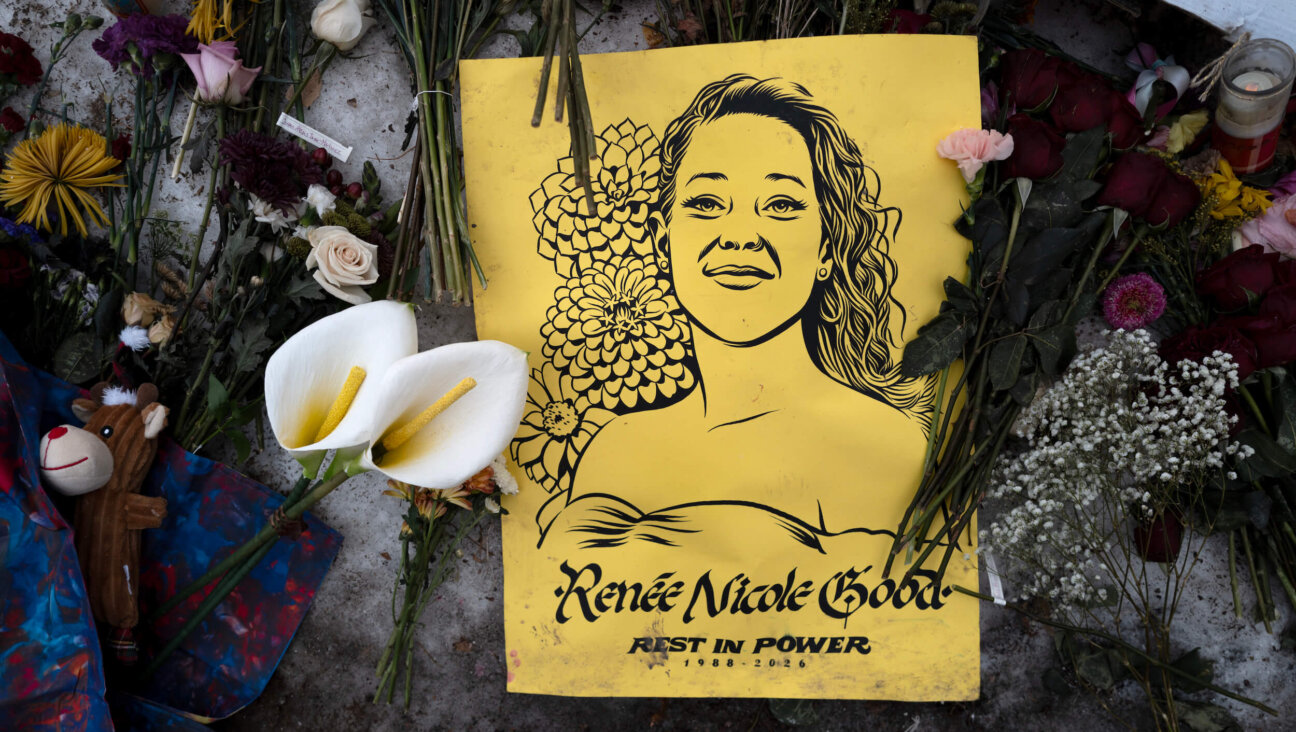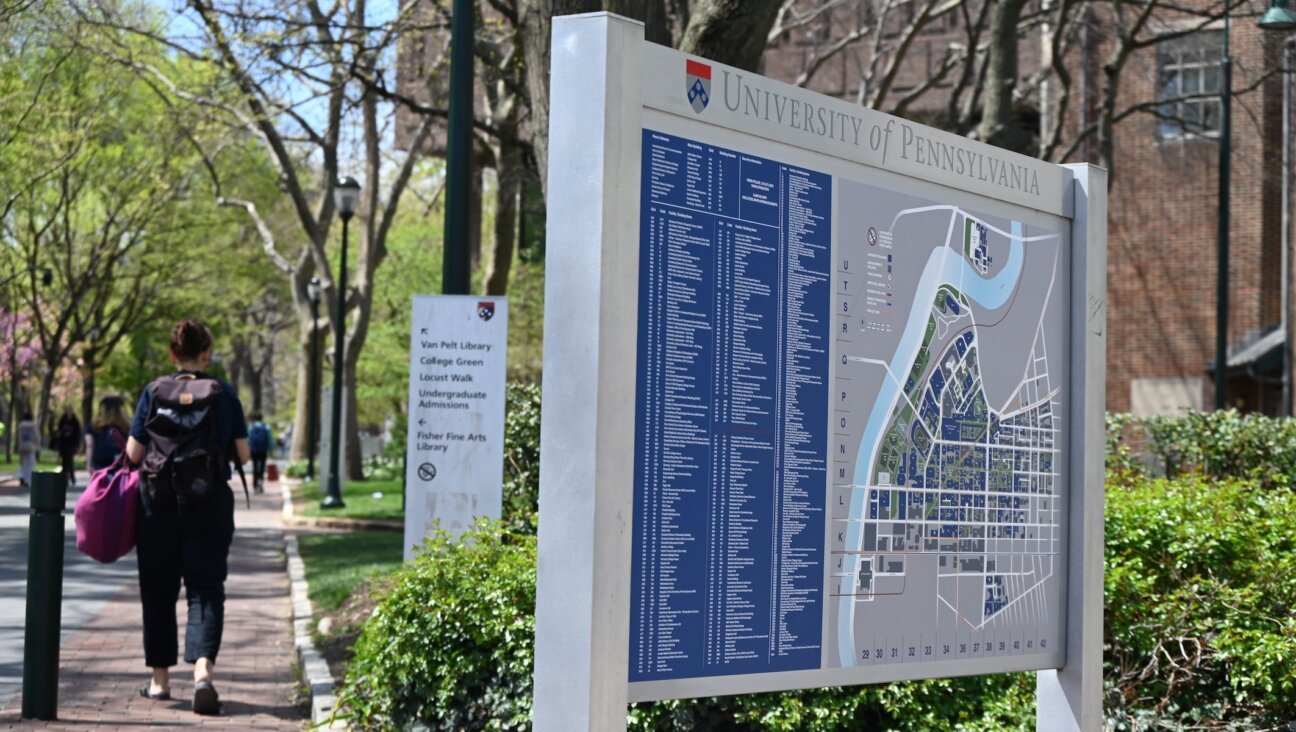Why do Orthodox protesters keep breaking into IDF bases?
Two recent protests in Israel show a troubling, growing divide between the religious and the secular

Right-wing Israelis demonstrate outside the Sde Teiman military base near Beersheba on Monday. Photo by Menahem Kahana/AFP/Getty Images
Editor’s note: Haredi protesters broke into another IDF base on Tuesday, Aug. 6. Unlike protests a week before, which were sparked by the arrest of nine IDF soldiers, Tuesday’s demonstration was a reaction to the military beginning to draft Haredim following the official end of their longstanding exemption from service.
If you look carefully at the images of Israeli citizens storming a prison and a military base in defense of IDF soldiers accused of torturing Palestinians, you’ll notice something disturbing: many of them are wearing yarmulkes.
It’s not a coincidence. The deeply religious population of Israel is growing — in some cases exponentially — and a good portion of that population has thrown its support behind anti-liberal causes.
What Monday’s disturbing protests revealed was that the country’s deep and growing divide is not just about policy, but about Judaism itself.
“Yesterday may have been our Jan. 6 moment,” said Dan Ben-David, a researcher who tracks Israel’s demographic and social trends.
The mob that breached the Israel Defense Forces bases at Sde Teiman and Beit Lid was egged on by cabinet ministers and members of the Knesset. The police did not intervene for several hours, which some analysts have attributed to decisions made by national security minister Itamar Ben-Gvir, a member of the far-right National Religious party.
Monday’s mayhem was an especially incendiary example of the changing status quo, with kippah-clad protesters battling IDF soldiers. But a recent visit to Israel revealed clues to growing divisions everywhere.
At a July 13 march in Jerusalem, thousands of protesters filled a major intersection near the prime minister’s offices and nearby streets, calling for an immediate hostage deal. Demonstrations led chants — “We won’t abandon them! We won’t abandon them!” — banged drums, and blew whistles as police looked on.
Nearby, a counterprotest group called the Forum of the Fallen — in Hebrew, “HaGevura,” which translates to “heroism” — had set up a large white tent, demanding that the government make no deal before the war against Hamas is won. The group, founded by families of fallen soldiers, including some killed in the current war, posted their motto along the front of the tent, reading “Their deaths demand victory!”
It was glaringly apparent that while the vast majority of the marchers on behalf of the hostages did not wear kippot, all the counterprotesters did.
What’s happening is that, at the same time the Orthodox Jewish population of Israel is growing, so is that population’s political identification with the right and far-right.
A new study from Ben-David’s Shoresh Institute found that the average Haredi family in Israel has 6.4 children, while secular Jews have 2 children per family. That’s a Haredi birth rate roughly three times higher than that of secular Jews.
If this trend continues, the Haredi share of Israel’s population will double every 25 years. In 2023, just over a quarter of Israeli children under 4 were Haredim.
The political ramifications of this extraordinary demographic growth are significant. A 2019 Israel Democracy Institute study found that the majority of the Haredi public identified as right wing or moderately right wing on security and foreign affairs.
“We belong to the right-wing bloc, we want to keep the land of Israel whole,” said Yitzhak Goldknopf, the chairman of United Torah Judaism, a Haredi party, at a conference last September.
That right-wing bloc, which consists of two Haredi and three Jewish nationalist parties, has formed a fragile alliance with Prime Minister Benjamin Netanyahu’s Likkud party in exchange for a number of much-desired policies toward religious communities, including government subsidies of the religious educational system, which for the most part does not include a core curriculum of secular studies.
Of course, not all the protesters at the army bases were religious, and most religious Jews in Israel and around the world do not align themselves with extremist ideologies and political violence. But the growing population of the religious community in Israel, and the fusion of religion with a particularly dangerous form of far-right patriotism, has been an unmistakable trend.
One major example: the growth of the hardalim movement, a fusion of Haredim and nationalism that grew out of the West Bank settler movement. In 2009, some 90,000 of the religious Zionist public identified as hardalim. Today some 190,000, or 2% of the country, do.
In the Gaza war, Jewish religious leaders have celebrated the destruction of innocent lives and property. Remarking on the invasion of the coastal strip, Rabbi Amihai Friedman, spiritual leader at the training base for one of Israel’s main infantry brigades, told soldiers in November that aside from the grief caused by Israeli casualties and hostages, the war had given him “what is maybe the happiest month in my life since I was born.”
The riot at the Sde Teiman army base happened in reaction to the arrest of nine soldiers accused of raping a Palestinian prisoner there. To those protesting the arrests, holding IDF soldiers responsible for horrific abuses isn’t a proper function of justice; it’s a betrayal of the guiding ideology that, simply put, Israeli Jews are above accountability. Among them was Knesset member Limor Son Har-Melech, of the religious Otzma Yehudit, or Jewish Power party, who joined a chorus of Orthodox voices defending homosexual rape.
“The people of Israel are fighting outside enemies while enemies are trying to eat away at it from within,” she said.
If this all looks vaguely familiar to an American Jew, it’s because Jewish nationalism in Israel mirrors the rise of Christian nationalism in the U.S.
Christian nationalism is a reaction to a country that is becoming inexorably more diverse, tolerant and secular. In Israel, Jewish nationalism is a result of the country becoming more religious, homogenous and conservative.
Christian nationalism and its Trumpist shock troops are the death throes of an old, bigoted version of America. But in Israel? The rise of Jewish supremacists may herald the birth pangs of a new kind of country.
In a few decades, said Ben-David, these groups will not need to join a coalition for funding and power.
“Demographics alone will ensure that they will be able to finish the decimation of our independent courts,” he said, “and bring an end to the modern liberal democracy that we created here.”
















